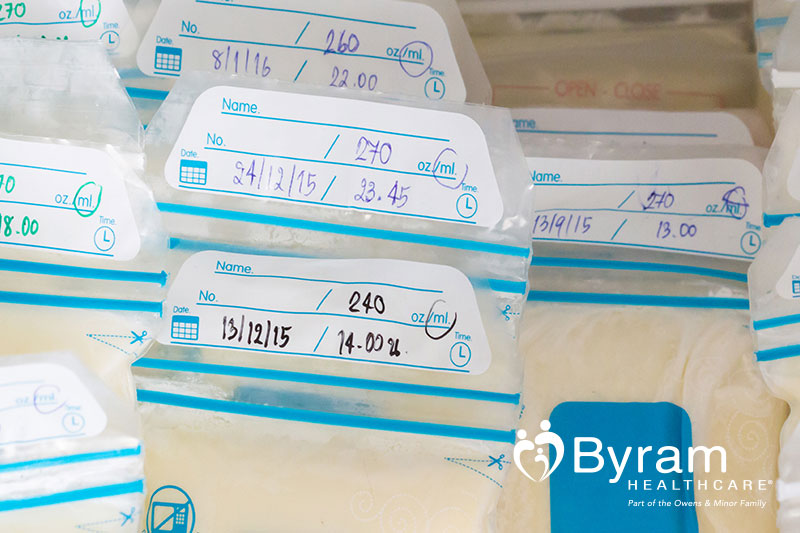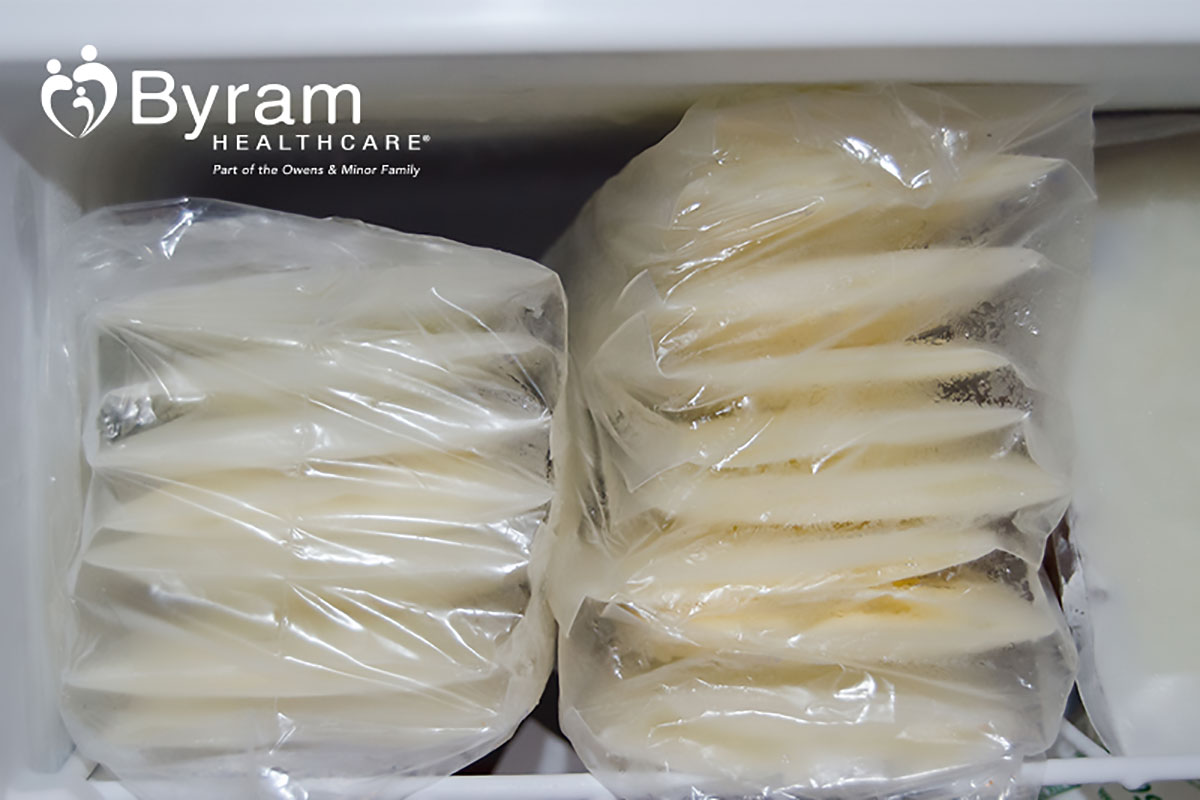We partnered with Shari Criso, a certified lactation consultant, RN and nurse midwife to create “A Working Mom’s Guide to Breastfeeding” – a free resource created for new moms transitioning back to work. Our toolkit guides you on everything you need to know about your breastfeeding rights both in and out of the workplace, selecting the best breast pump, navigating pumping while at work and more.
Here is a preview of the practical advice you will find from Shari in our toolkit, inspired by the most common questions she gets from breastfeeding moms getting ready to return to the workforce:
Make it Work: Expert Answers to Your Breastfeeding Questions
By Shari Criso, MSN, RN, CNM, IBCLC
Ensuring you have enough milk is something a lot of breastfeeding moms worry about. Add in plans for returning to work, where there are stretches of time you’ll be away from your baby, and things suddenly get a little scarier and more urgent! I receive a lot of questions from new moms who have concerns about breastfeeding and pumping while at work. A list of my FAQs is below, complete with guidance to help keep you one step ahead of the game.
1. How much milk do I need to pump in preparation for my first day back at work?
The rule of thumb is that breastfed infants consume approximately 1 to 1 ½ ounces per hour by the time they are 6 weeks old. This should help you plan how much milk you will need for those days when you’re away from your baby. For example, if you are separated for 10 hours a day, Monday through Friday, I recommend providing your caregiver with approximately 10-15 ounces of breastmilk for each of those five days. Of course, there are times when babies want a little more or a little less, but this is a good place to start.
2. Do I need to have a lot of milk stored in the freezer?
Building a stockpile of milk ensures that you won’t run out when your baby has a growth spurt and spike in appetite, or if you have a low production day. Having extra stored milk in the freezer is always a good plan; I recommend trying to have about 10-12 extra feedings put away. What you don’t need is a freezer filled with extra milk – while it may give you a sense of security, it is not necessary to have before returning to work. It could even be difficult to do when your baby seems to be eating all the time! The best milk for your baby is the milk you will pump each day and bring home, as well as the direct nursing you will do when you are together. Start slow and build up as needed. And remember, the more you breastfeed, the more milk you will make.
3. My baby eats all the time! How do I make sure I have enough milk?
If your baby is drinking more breastmilk than usual, it’s likely because they are growing. The good news is that growth spurts are temporary. The bad news is that your plan to store extra will have to wait, as this is not the time to build your stash! Breastfeeding your baby more often when you’re home and adding a pumping session or two to your routine should help you increase your supply. If your baby is truly eating all the time and you find yourself with less time to pump, try pumping one breast as your baby nurses on the other. Even waking up a little earlier to get a pumping session in before work can help a lot. Most importantly, learn how to use your pump to stimulate more let-downs and get as much milk out as you can at each session. Don’t forget that pumping more milk will stimulate additional production.

4. How do I prevent my milk supply from decreasing after getting back to work? And if it already has, how can I increase it again so my baby has what they need?
The number one cause of a diminishing milk supply is decreased milk expression. Your baby can usually get more out than your pump, and your pump won’t let you know that it wants more even if the clock says otherwise. This is how your baby regulates your supply up or down according to their needs. If you see your supply starting to dip, I recommend more frequent pumping sessions or an extra breastfeeding session during the day.
Stress can also negatively impact your milk production. And let’s be real, going back to work after having your baby can be stressful, especially while balancing a new schedule and added responsibility. A dip in your supply can also be caused by lack of sleep, hormones and dehydration. It’s important to carve out time for yourself to shower, sleep and eat – and lean on your partner, family and friends to help you. You can’t properly care for your baby if you’re not taken care of first! Similarly, staying hydrated will help maintain your supply. Be sure to pack an extra water bottle in your work bag and remind yourself to drink up.
Teach and remind your caregiver to do paced (slow, baby-led) feedings so that your baby isn’t being overfed, which can create a greater demand than what is actually needed. This can largely impact why pumping moms may feel that their supply is inadequate.
Check your pump parts and make sure you’re replacing them as needed, according to the manufacturer’s instructions. Using worn out valves or membranes will decrease your pump’s efficiency, the amount you’re able to pump out and your supply. When you’re back to work and pumping several times a day, I advise replacing pump parts every two months or sooner. Always keep spare parts in your pump bag for this reason.
I also recommend breast compression during your pumping sessions and hand expression immediately after – this will help get those last drops of milk out that the pump can’t. Getting more out will help maintain and increase your supply. However, if you’re still having trouble, consult with a lactation consultant or your doctor.
5. Do I need to wash my pump parts every time I pump at work?
The Center for Disease Control and Prevention (CDC) recommends washing your pump parts after each pumping session. However, when you’re a busy mom juggling your professional and family life, sometimes there just isn’t enough time to stand over the sink and scrub once you’re done expressing milk, especially if you have limited time during your pumping breaks at work. If you have spare parts, rinse the used ones and store them in your cooler with your expressed milk during the day. This way, you can wait to clean them more thoroughly at home – saving you time at work and making pumping breaks much more convenient.
New routines can be daunting but you’ll get the hang of it soon. It can be hard being away from your baby, but you should be proud of yourself for making the leap back into the workforce – I know I am! Have patience with yourself and remember that you got this, Mama!
Shari Criso is a RN, certified nurse midwife, International Board Certified Lactation Consultant and nationally recognized parenting educator. With nearly three decades of experience, Criso educates, empowers and supports new parents throughout pregnancy as they transition into parenthood. Byram Healthcare partnered with Criso to empower new moms by raising awareness of their breastfeeding benefits under the Affordable Care Act and other federal laws. Learn more about Criso and watch her free online breastfeeding course at https://mybabyexperts.com/
Looking for more helpful advice for working moms who breastfeed? Download Byram Healthcare’s new toolkit, “A Working Mom’s Guide to Breastfeeding”





